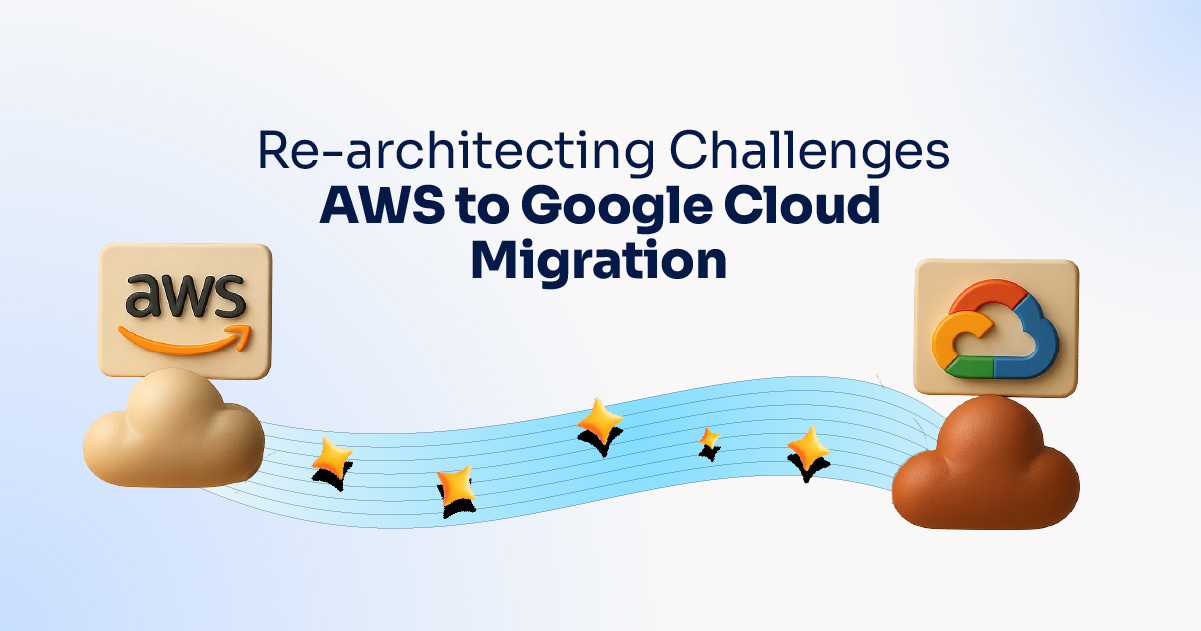
Cloud computing has revolutionized how businesses operate, offering scalability, agility, and cost-efficiency. However, moving from one cloud provider to another—especially between giants like Amazon Web Services (AWS) and Google Cloud Platform (GCP)—is not a simple lift-and-shift. Instead, it often involves deep architectural changes. These rearchitecting challenges can create significant roadblocks if not addressed strategically.
In this article, we will explore the core rearchitecting challenges companies face when migrating from AWS to Google Cloud and how businesses can overcome them to ensure a smooth transition.
Why Move from AWS to Google Cloud?
Before diving into the challenges, it’s essential to understand the motivations behind such a migration. Many organizations consider moving to Google Cloud for various reasons:
- Better pricing models and sustained use discounts.
- Integrated AI and machine learning tools.
- High-performance data analytics capabilities via BigQuery.
- Multi-cloud strategies for avoiding vendor lock-in.
While these are compelling reasons, realizing them involves rearchitecting your application to fit GCP’s environment, which differs significantly from AWS.
Key Rearchitecting Challenges
1. Differences in Services and Terminologies
Although AWS and GCP offer similar cloud services, they often differ in naming conventions, configuration options, and functionality. For example:
- AWS’s EC2 is equivalent to GCP’s Compute Engine.
- AWS’s S3 compares to GCP’s Cloud Storage.
- AWS Lambda is similar to GCP’s Cloud Functions.
These differences can require not only renaming components but also redesigning how your services interact. A solution built using AWS-specific services like DynamoDB or Elastic Beanstalk may need to be restructured entirely for GCP.
2. Networking and IAM Redesign
Network configuration and Identity and Access Management (IAM) settings on AWS are distinctly different from those in Google Cloud. AWS uses VPCs with subnets, route tables, and network ACLs, while Google Cloud uses a global VPC model that integrates these aspects differently.
Similarly, IAM policies in GCP are resource-hierarchical and project-based, unlike AWS’s user-based approach. Migrating requires a complete audit and reconfiguration of security roles and permissions, which can be complex and time-consuming.
3. Data Migration and Storage Format Compatibility
Transferring data between clouds sounds straightforward, but complications arise in compatibility. Differences in data formats, encryption methods, and storage tiers require careful planning. For example, if you’re using AWS Glacier for archival storage, finding a GCP equivalent with matching costs and retrieval times (like Google Archive Storage) may involve compromises.
Additionally, ensuring data integrity, consistency, and minimal downtime during the transfer can become challenging without proper tools and experience. Businesses often rely on Cloud Migration Services to handle this process securely.
4. Refactoring Applications and Workloads
AWS-based applications are often tightly coupled with services such as AWS Lambda, SQS, and SNS. Migrating to GCP means rearchitecting those applications to use Google Cloud Functions, Pub/Sub, or Cloud Tasks, which may offer different functionality or constraints.
This refactoring effort isn’t just about code changes. It impacts workflows, CI/CD pipelines, and even organizational roles, requiring development teams to learn new tools and APIs. Without proper training and planning, productivity can suffer post-migration.
5. Automation and DevOps Adjustments
DevOps pipelines designed for AWS using tools like CodeDeploy, CloudFormation, or AWS CodePipeline must be rebuilt for GCP’s alternatives like Deployment Manager, Cloud Build, or Terraform configurations tailored for Google Cloud.
Furthermore, logs, monitoring, and alerts using AWS CloudWatch must be migrated to GCP’s Stackdriver (now part of Google Cloud Operations suite), demanding a shift in the way teams monitor and respond to issues.
6. Compliance and Regulatory Adjustments
Organizations in regulated industries (like finance or healthcare) must ensure that their workloads meet compliance standards like HIPAA, GDPR, or SOC 2—even after migration. These standards may be implemented differently between AWS and GCP.
Therefore, compliance needs to be revisited during rearchitecting, and controls must be replicated or redesigned to satisfy legal obligations in the new cloud environment.
How to Overcome These Rearchitecting Challenges?
- Conduct a Cloud Readiness Assessment
Begin with a comprehensive assessment of your existing AWS architecture. Identify services and workloads that are tightly coupled with AWS-specific offerings and plan for equivalent or alternative GCP solutions. - Engage Cloud Migration Experts
Enlisting experienced professionals or third-party Cloud Migration Services providers can streamline the transition. They help map services, optimize costs, ensure compliance, and handle complex rearchitecting efficiently. - Build a Pilot Project First
Before migrating your entire infrastructure, select a small, non-critical workload to test the waters. Use this pilot to evaluate performance, uncover unexpected issues, and build confidence. - Train and Upskill Teams
Provide your DevOps and development teams with the necessary GCP certifications or training resources. Familiarizing them with GCP tools will reduce post-migration friction. - Implement a Phased Migration Strategy
Rather than attempting a full cutover, break the migration into smaller phases. This reduces risk, enables rollback if needed, and allows each business unit to adjust at its own pace.
Conclusion
Rearchitecting during a migration from AWS to Google Cloud is a challenging endeavor—but not an impossible one. The key lies in understanding the architectural differences, preparing your teams, and partnering with the right experts to guide the journey. Done right, this migration can unlock powerful features of Google Cloud, enhance performance, and drive long-term business growth.
As with any significant IT initiative, success depends on planning, expertise, and a clear vision of the future. If you’re ready to migrate but need help navigating the complexities, consider reaching out to experienced Cloud Migration Services providers to ensure your rearchitecting journey is seamless and successful.
